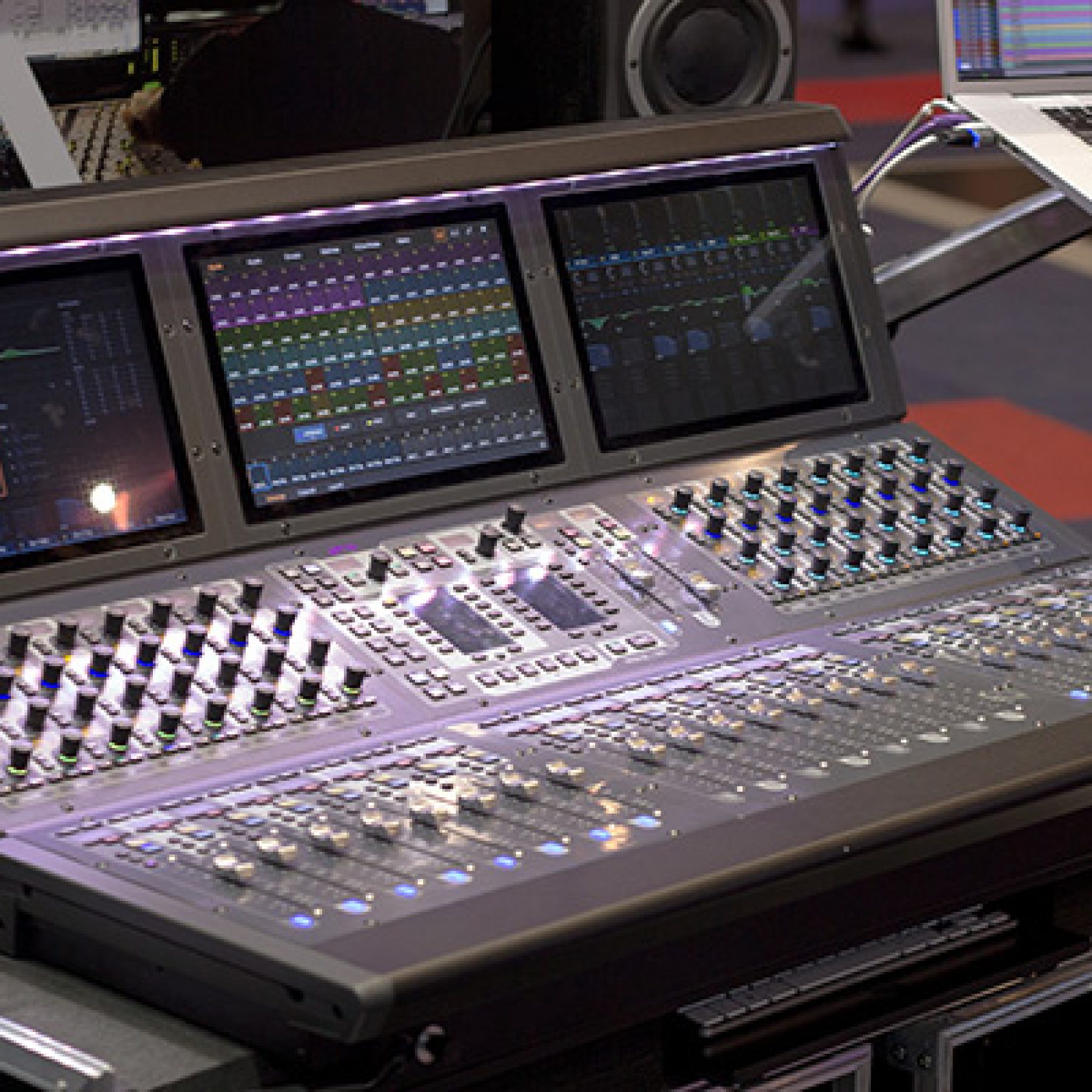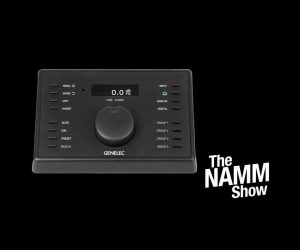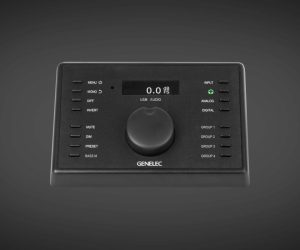
SMPTE 2015: Hands On With Avid S6L
Report: Mark Davie
Even though Avid has pencilled a tentative release date for the S6L around the North American winter, it’s still got a long way to go around the software development merry-go-round. At SMPTE 2015 in Sydney when Gil Gowing, Avid’s Manager of Pro Audio Solutions Design, gave AudioTechnology a rundown of the live system’s current state, he described it as being in a pre-Alpha stage — at least two more Greek letters before anyone outside of Avid gets their hands on it. There’s still plenty of scope for firmware refinements as many things aren’t locked down; a few times I asked what a button does, and Gowing would respond, ‘not sure yet, we’re still deciding.’
The hardware is pretty much ready to go though. And the first thing you notice is how compact the surface is. “Some of the feedback we got from customers was they wanted a compact surface, but with a lot of control,” said Gowing. “We wanted to make the experience very rich in visual feedback, but the navigation had to be fast and intuitive for people to walk up and use it.” The tri-angled layout of the S6L surface kicks up the monitors to almost vertical, putting them and the knobs within easy reach. The ergonomics feel spot on, making movements on a flat-topped Profile seem stretched by comparison.
The master section touchscreen allows you to navigate and route the console with ease, and a universal bar at the bottom of the screen displays what’s on the console surface. Gowing also says you’ll be able to create fader layouts made up of any input, output, bus or matrix, and put them in any order — something that seems a given, but not all manufacturers allow.
TOUCH & YOU’LL TURN
The S6L is similar to Avid’s S6 studio control surface — mini LCDs connected to knobs, and global colours — tweaked for live sound and without the gloss finish. The four channel encoders initially display a set of ‘most used’ parameters per channel, things like input gain and compressor threshold. There are a few different ways to spill channel parameters across all the encoders, either via the touchscreen, paging through, or using the channel select buttons in tandem with function buttons that display parameter modules.
There are three options, two 24-fader variants — one with touchscreens over all three fader buckets, and a cheaper version with only a master touchscreen — and a 32-fader version with all its touchscreens. Gowing reckons once people get a feel for how the touchscreen integrates with the workflow, they’ll see the value in the touchscreens above each channel bank. It’s undoubtedly faster to work on the console with them there, though it’s more touch and turn — no touch and dragging EQ parameters, for instance. While it’s possible for screens to be added later, Gowing was unsure at this stage whether Avid will offer that option.
One option Gowing said you can hang your hat on, is a promised Thunderbolt recording expansion card. Out of the box, you can record 64 channels directly to you Macbook Pro’s ethernet port over AVB — double the Firewire option card for the Profile. Shortly after the S6L starts shipping, Gowing promises a Thunderbolt card will ship that will quadruple that channel count to 256 — all at 96k without having to buy an extra Pro Tools rig.
96K ALL THE WAY
Which brings us to one of the biggest leaps over past Venue systems: the S6L system runs at 96k, without sacrificing any flexibility. The system comprises three parts; an S6L control surface, an E6 engine and Stage64 I/O boxes. Initially, there will be two different engines, running at 32-bit float. The E6 144 Engine will handle 144 input channels, 64 buses, LCR output and 16×16 matrix with full processing.
The E6 192 Engine will handle 192 input channels, 96 busses, LCR output and 24×24 matrix with full processing. For the first time, instead of running everything on the engine via proprietary DSP cards, Avid has split the processing into a hybrid system. “There’s a core that has dedicated processing to run the entire console — all the input channels, busing, outputs, matrixes, and all its processing,” said Gowing. “Leaving all the AAX DSP on the cards just for plug-ins. Previously, you would have to choose how you wanted to configure the system. If you wanted a certain amount of I/O, it would leave less chips on the DSP for plug-ins, and vice versa. Same with buses and graphic EQs, it was always a tradeoff.”
Again, you get the same amount of channels, etc whether you’re running at 48k or 96k; no halving the channel count with a higher sample rate. The option for a system-wide 48k sample rate is there for a few reasons; compatibility with older Venue systems, if you’re broadcasting in 48k, or if you’re recording and want to cut down on hard drive space. There’s no down-sampling into Pro Tools, so you have to choose one sample rate or the other.
“There’s a core that has dedicated processing to run the entire console, leaving all the AAX DSP on the cards just for plug-ins”
NETWORK EFFECT
The S6L system is connected via AVB ethernet. As to why Avid chose AVB over something like Dante? Gowing: “It’s an open standard. And it has high ease of use — no need to assign IP addresses, it’ll just work. Dante and Optocore are proprietary. They’re good options, but we’re keeping them as just options. We’re working with Audinate on a Dante card for this, that will come out after it’s shipped. The S6L will still operate via AVB, but you’ll be able to pick off streams and put them onto a Dante network via an optional card.”
There’s no word on latency yet, but like MOTU, Gowing estimates they’ll be under AVB standard’s fixed 2ms latency within their system. You can either chain devices together or use an AVB-compliant switch to implement a star configuration. While Avid will make recommendations, it doesn’t plan on getting into the IT peripheral business itself.
I/O EVERYWHERE
The Stage64 box has 64×32 I/O, with new IC mic preamps from THAT Corp and updated conversion in keeping with the Euphonix/Avid philosophy of “making it as high quality as possible, without having ‘a sound’,” said Gowing. “We try to be super clean, and you can add the colour with plug-ins.” It also features built-in MADI outputs so you can simultaneously pick off a MADI stream at the box. At 48k, you can tap two mirrored MADI streams, allowing you to split off to two different locations without any extra gear. A new headphone amp onboard lets you monitor a pair of input or outputs at a time and troubleshoot the I/O at the rack, without interrupting the mix workflow. “When it ships, the E6 144 Engine will handle three Stage64s, and the E6 192 will probably do four,” said Gowing. “Eventually we’ll broaden that number. Obviously, you’ll only be able to use the number of input and outputs the engine can handle, but you’ll be able to spread I/O across your network and choose where you’re going to get your I/O from. When we ship, you will be able to use enough I/O to max out your engines, it’s just a matter of having the software bulletproof before we expand that number.”
A VENUE IS A VENUE
Gowing was quick to remind me that while the S6L is a completely new live system, it still runs on Venue software. Gowing: “It’s still Venue, but re-skinned and resized for a 1920×1080 monitor. Older shows will load up just fine on the S6L.”
















RESPONSES